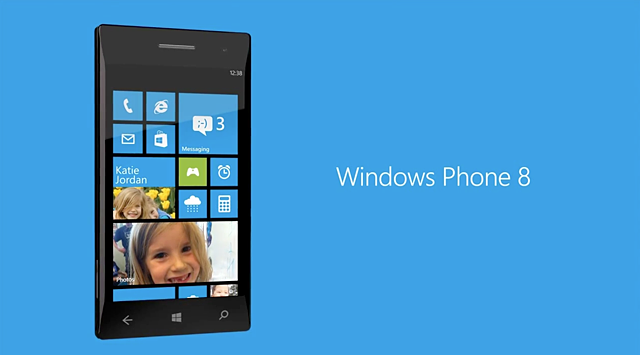The most important thing about Windows Phone 8
Yesterday, as part of the Windows Phone Summit in San Francisco, Microsoft presented an updated version of its mobile platform. Windows Phone 8 is very different from the “seven” and may well become a real competitor to iOS and Android.
During the presentation, we did not leave the feeling that Microsoft, when developing a new version of the OS, more than once or twice got acquainted with critical materials on Windows Phone 7. Almost all the points that previously caused developers and reviewers questions, judging by the announcement, have been resolved. So at the end of the event, some particularly impressionable viewers got the impression that in the fall (the release of the platform is scheduled for September-October this year), an ideal mobile OS will appear on the market in every sense.

The principal feature of the new Windows Phone is a single software core with desktop Windows 8. This means that the mobile version of the OS will support the same file system and the same drivers as the larger OS.
Thanks to the new OS kernel, radically different from the mobile “seven”, Windows Phone 8 has support for multi–core processors and microSD memory, among other things. Also now you can forget about C#. Developers will be able to make applications in C and C++. Speaking of native code, Microsoft announced more complete support for DirectX, and noted that porting games from iOS/Android to WP8 will be much easier due to the rejection of managed code. Yes, despite the reversal to the NT kernel face, already existing applications for Windows Phone 7 will also be launched on the new mobile OS (after recompilation, which Microsoft promises to crank out on its own).
The new software core supporting native code is the main innovation of WP8. So if we were not deceived during the announcement, in a year the number of applications (including gaming) under the new OS, there may be more than Android currently has. And, as you know, a large amount of content leads to good sales of devices.
Among other interesting innovations:
1. Two new supported resolutions: WXGA (1280 by 768) and 720p (1280 by 720). In total, Windows Phone 8 will support three resolutions. Third: WVGA (800 by 480). At the presentation, the system developers claimed that the applications would automatically scale to fit the device screen
2. The new browser – Interenet Explorer 10, which blocks viral sites, works 4 times faster with JavaScript than Interenet Explorer 9 on Windows Phone 7.5 and works twice as fast with HTML5. Microsoft also assures that this browser on WP8 functions much more efficiently than Safari on iPhone 4S (iOS 6 Beta).
3. Support for Near Field Communication – low-range wireless high-frequency communication technology.
4. Offline maps from Nokia.
5. A new design, or to be more precise, a fixed Metro UI interface: WP8 has lost the ugly black stripe on the right, plus it is now possible to adjust the size of tiles. Now the whole thing can really be adjusted to suit yourself. On the other hand, from those variants of “desktops” that Microsoft presented at the presentation, to put it mildly, it is blinding.
6. Imaginary extended multitasking. In other words, some programs are allowed to work in the background. By the way, thanks to this, another feature became possible – “deep integration” with Skype. So VoIP calls can be received as usual.
To all this, it remains to add just a couple of points.
All devices released under the seven (including 7.5) will not support WP8 (even Nokia Lumia 900 flies by). A special version will be released for them – 7.8, which visually (and only visually) will be identical to the “eight”. The first Windows Phone 8 devices will be released in the fall simultaneously with the release of the platform. Their productions will be handled by: Nokia, Samsung, HTC and Huawei. All of them will use processors from Qualcomm.